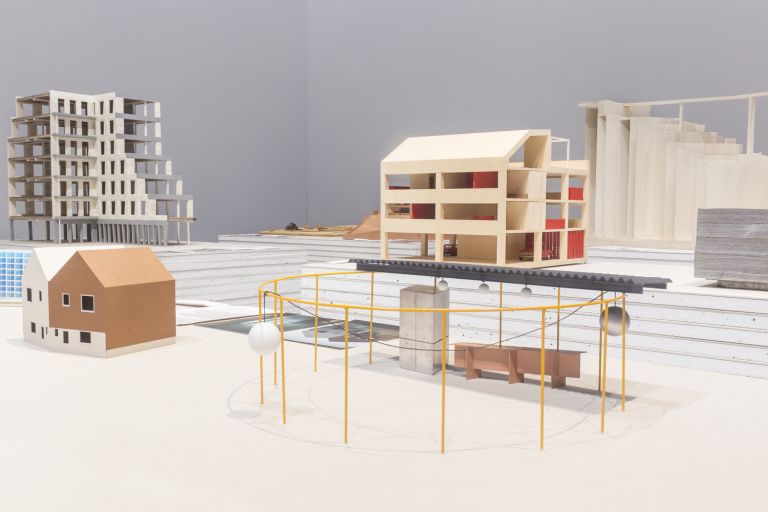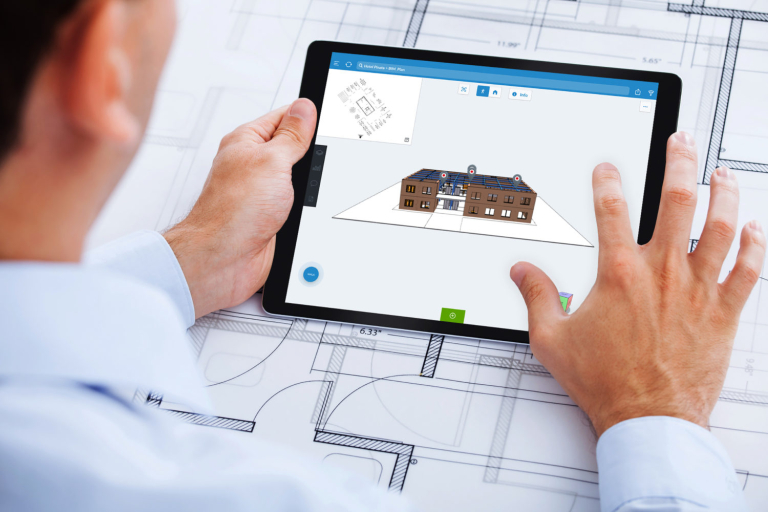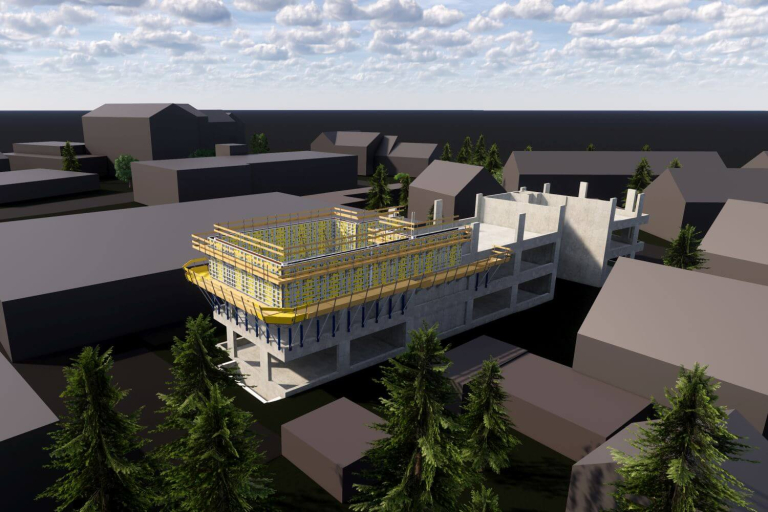In the construction world, there's a big innovation called 3D BIM Coordination. It's changing how we do things in construction, making them better and faster. In this article, we'll talk about 3D BIM Coordination and how it's making construction better. Let's explore this new way of doing things in construction together.
What is 3D BIM Coordination?
3D BIM Coordination is a way to use computers to help build things like buildings. It makes digital 3D models of all the parts of a building, like walls, pipes, and wires. People use these models to plan and manage the construction project.
The main idea is that these 3D models help different teams, like architects and builders, work better together. They can find and fix problems early, which saves time and money. This teamwork makes sure all the parts of a building fit perfectly, making construction go smoothly.

Compare Between Traditional Method vs 3D BIM Model
In the construction and project management world, there's a big battle between old ways and new tech. One super cool innovation is Building Information Modeling (BIM), especially the 3D model. BIM is like a game-changer because it makes building stuff way better. Let's break down the big differences between 3D BIM Coordination and the old-school methods, debunking those BIM myths and showcasing the real benefits.
So, old-school is all about flat drawings, like when you draw on paper. But it's kind of like playing a game with missing pieces because those drawings don't show everything. Also, people don't talk to each other as much, which can cause problems. Mistakes happen, things get delayed, and it's tough for everyone to see what the final project will look like. But 3D BIM is like having a super detailed model on your computer. It shows everything in 3D, which is like looking at a real thing. People can work together better, find problems early, and save money. In the end, 3D BIM makes building stuff way smoother and smarter. As tech keeps growing, BIM and other cool tools will make the construction world even better!
The Importance of 3D BIM Coordination
Enhancing Teamwork and Communication
Let's talk about working together better and talking more effectively. With the help of 3D BIM, teams can easily see and change designs in real-time. They can catch problems or concerns before starting construction. You don't need long meetings or lots of emails anymore. Now, you can talk efficiently with everyone in one place. And it stops costly mistakes from misunderstandings. If you want things to be clearer and work better, try 3D BIM.
Minimizing Rework and Mistakes
What's better than doing something perfectly the first time? That's what 3D BIM coordination does. It finds problems before construction starts, so you don't make expensive mistakes later. Don't risk your projects – trust technology to make your work smoother and more precise. With 3D BIM coordination, you can start your project knowing everything has been carefully checked. Say goodbye to redoing work and hello to doing it right from the start.

Boosting Efficiency and Productivity
Coordinating construction projects can be a big headache. But 3D BIM coordination makes it much easier. It boosts efficiency and productivity, changing how we work in architecture and construction. No more wasting time with lots of blueprints or dealing with problems between different systems. Instead, 3D BIM lets you put everything together in one model, from plumbing to wiring. So why work slowly when you can work efficiently? Say goodbye to waste and hello to success with 3D BIM coordination.
Saving Money and Streamlining Costs
Let's talk about saving money with 3D BIM coordination! It makes your budget happy and makes construction smoother. With accurate designs and good communication, you can avoid costly mistakes and changes. 3D BIM coordination also helps you figure out how much material you need and plan better. Who doesn't like saving money? With all these benefits, you'll have more money left and finish your project on time. Don't settle for less when you can use 3D BIM coordination.
Challenges and Limitations of 3D BIM Coordination
Implementing 3D BIM coordination poses several common challenges. When we deal with new technology, we encounter difficulties, and this one is no different.
Lack of Standardization
One of the primary hurdles lies in the absence of standardized protocols across various software platforms. Each may operate under different rules and formats, complicating seamless collaboration.
Learning Curve Delays
Transitioning from traditional methods to 3D BIM coordination can be daunting for team members accustomed to older practices. The learning curve associated with mastering new technology can lead to delays and frustration.
Human Errors
Despite the sophistication of BIM technology, it remains susceptible to errors stemming from human oversight. Inaccurate modeling or incomplete data input can disrupt project timelines and budgets. However, with diligent training and transparent communication among stakeholders, these challenges can be mitigated.
Overwhelming Models
BIM models, while comprehensive, can become unwieldy and challenging to manage, akin to tending to an intricate garden requiring constant attention.
Data Reliability
The accuracy and reliability of BIM models hinge heavily on the quality of the input data. Any inconsistencies or inaccuracies in data can undermine the integrity of the entire model.
Not a Magic Fix
It's crucial to recognize that BIM technology is a tool, not a panacea. While it can streamline processes and improve efficiency, it cannot single-handedly address all challenges. Skilled human intervention remains indispensable for interpreting models and ensuring coherence.
Real-World Surprises
Despite meticulous digital planning, unforeseen on-site complexities can still arise during construction. While BIM provides valuable insights, it's essential not to rely solely on it and to remain attentive to other critical aspects of project execution.

How to Overcome These Disadvantages of 3D BIM Coordination?
We have a challenge ahead, but we're good at handling pressure. When it comes to using Building Information Modeling (BIM), there are a few things that can make it a bit tricky.
Standardization Initiatives
Encourage the development and adoption of industry-wide standards for BIM software platforms. This can help ensure interoperability between different systems and streamline collaboration among project stakeholders.
Comprehensive Training Programs
Invest in thorough training programs for team members to familiarize them with 3D BIM coordination tools and processes. Provide ongoing support and resources to help individuals overcome the learning curve and become proficient in utilizing the technology effectively.
Quality Assurance Processes
Implement robust quality assurance processes to minimize human errors in modeling and data input. This can include peer reviews, validation checks, and regular audits to ensure the accuracy and completeness of BIM models.
Improved Data Management Practices
Develop clear protocols for managing data within BIM models, including data validation procedures and data governance frameworks. Ensure that all stakeholders contribute accurate and reliable information to the models and address any data inconsistencies promptly.
Integrated Workflows
Foster greater integration between BIM coordination and other project management tools and processes. This can involve linking BIM models with scheduling software, cost estimation tools, and document management systems to create a more cohesive project workflow.
Continual Improvement Culture
Cultivate a culture of continual improvement within project teams, encouraging feedback, innovation, and collaboration. Emphasize the importance of learning from past experiences and implementing best practices to optimize the use of 3D BIM coordination technology.
Realistic Expectations Setting
Educate stakeholders about the capabilities and limitations of 3D BIM coordination technology. Emphasize that while BIM can provide valuable insights and efficiencies, it is not a panacea for all project challenges. Encourage a balanced approach that combines technology with human expertise and contingency planning for unexpected issues.
Flexibility and Adaptability
Remain flexible and adaptable in response to evolving project requirements and unforeseen obstacles. Encourage open communication and collaboration among project stakeholders to identify and address issues proactively, adjusting strategies and workflows as needed to achieve project objectives.

Introducing Harmony Advanced Technologies' BIM Coordination Services: Your Path to Seamless Construction Excellence!
Harmony AT's 3D BIM coordination solution represents a cutting-edge approach to optimizing collaboration and efficiency within construction projects. By seamlessly integrating advanced technology with intuitive design, Harmony AT empowers teams to streamline coordination processes and minimize errors throughout the project lifecycle. Leveraging sophisticated clash detection algorithms and real-time visualization capabilities, Harmony AT's platform facilitates early issue identification and resolution, ensuring smoother project progression and reducing the likelihood of costly delays.
Furthermore, Harmony AT prioritizes user-friendly interfaces and comprehensive training support, enabling teams to quickly adapt to the platform and maximize its benefits. With Harmony AT's 3D BIM coordination solution, construction professionals can orchestrate harmony among stakeholders, fostering greater productivity and success in their projects.
Ready to elevate your construction game? Contact us here and explore the endless possibilities of BIM Coordination Services. Let's build the future together!
Categories





